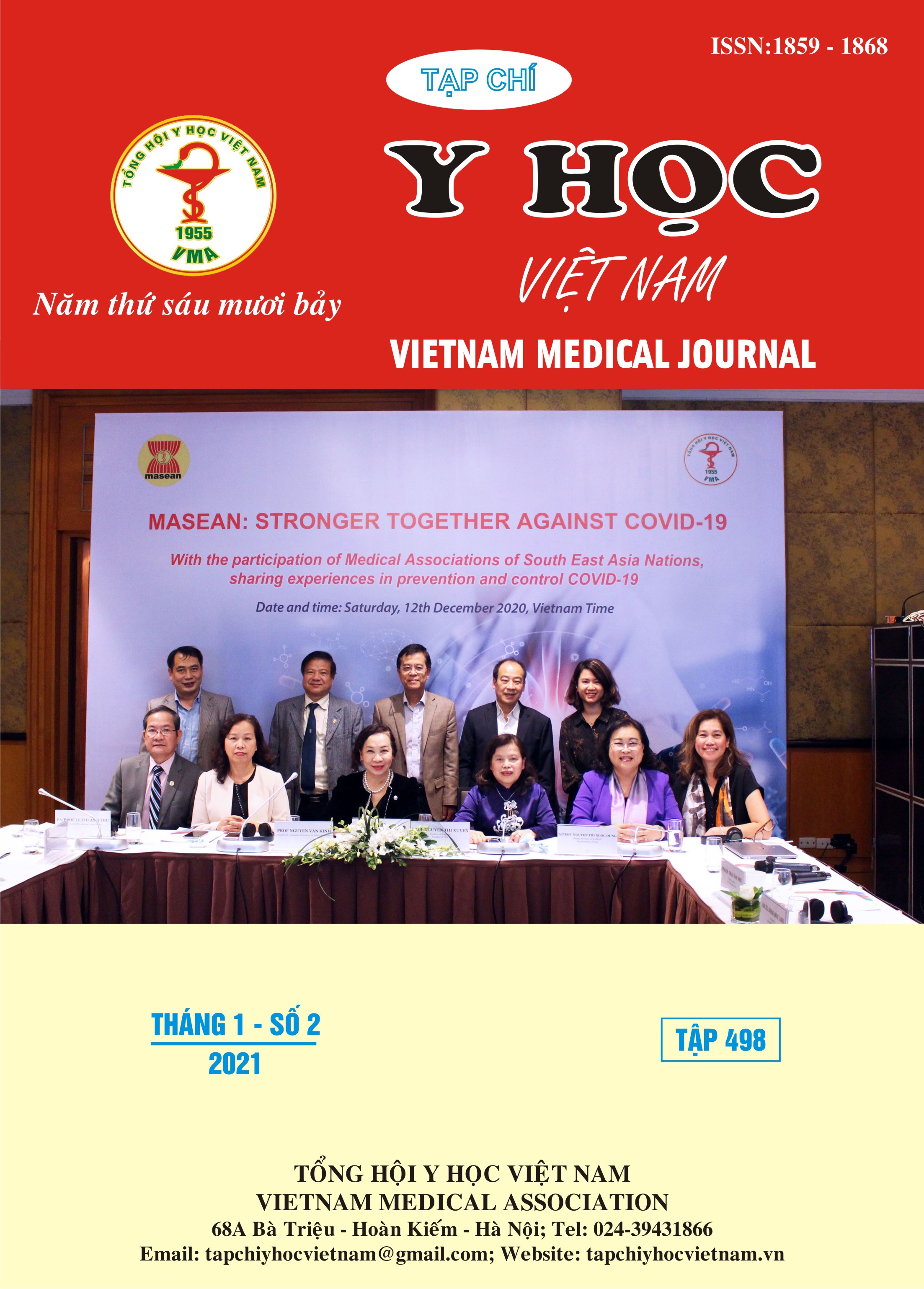THE ASSOCIATED FACTORS OF REHABILITATION OUTCOMES WITH COMBINATION OF MIRROR THERAPY AND PHYSICAL THERAPY IN PATIENTS WITH HEMIPARESIS DUE TO STROKE
Main Article Content
Abstract
Objective: To determine the associated factors of rehabilitation outcomes with combination of mirror therapy and physical therapy in patients with hemiparesis due to stroke. Subjects and methods: observation study with 90 patients with hemiparesis due to stroke. They are treated by mirror therapy in Cao Bang hospital of traditional medicine in the period from July, 3rd 2018 to July, 3rd 2020. Results and conclusions: The proportion of excellent movement ability in the under 60 years old group is 92,31%, which is higher than in the above 60 years old group, at 20% (p<0,05). The proportion of excellent movement ability in patients who was hospitalized within a month group and from one to three months group are 96,43% and 86,21%, respectively; these figures are higher significantly than in more- than-3- month-group, at 39,39% (p<0,05). Patients, with minor neurological defects according to NIHSS score, have good rehabilitation result , at 100% (p <0.05). The factors comprise: gender, paralysis, and type of brain damage were not associated with rehabilitation outcomes.
Article Details
Keywords
stroke, rehabilitation, ischemic stroke, physical therapy, mirror therapy
References
2. Trần Mỹ Luật (2008), Đánh giá kết quả phục hồi chức năng vận động của bệnh nhân tai biến mạch máu não tại bệnh viện điều dưỡng - phục hồi chức năng tỉnh Thái Nguyên. Luận văn thạc sỹ Đại học Y Dược Thái Nguyên, tr 78-79.
3. Nguyễn Xuân Nghiên, Trần Văn Chương (1998), Bước đầu nghiên cứu một số yếu tố tiên lượng Phục hồi vận động của bệnh nhân liệt nửa người do tai biến mạch máu não, kỷ yếu công trình nghiên cứu khoa học, Hội phục hồi chức năng Việt Nam, nhà xuất bản Y học, (5), tr.65-75.
4. Davis J.Z (1985), The Bobath approach to the treatment of adult hemiplegia, Occupational therapy. The C.V. Mosby Company. pp 217 – 226.
5. Jauch E.C (2013), Guidelines for the Early Management of Patients With Acute Ischemic Stroke, Stroke, American Stroke Association, 44, pp. 870-947
6. Petrea RE, Beiser AS (2009), Gender diffirences in stroke indidence and postroke disability in the Framingham Heart study stroke, p 102 – 105.
7. Bruce H, Dobkin MD (2005), Rehabilitation after stroke, N Engl J Med, 352: p 1677-1684


